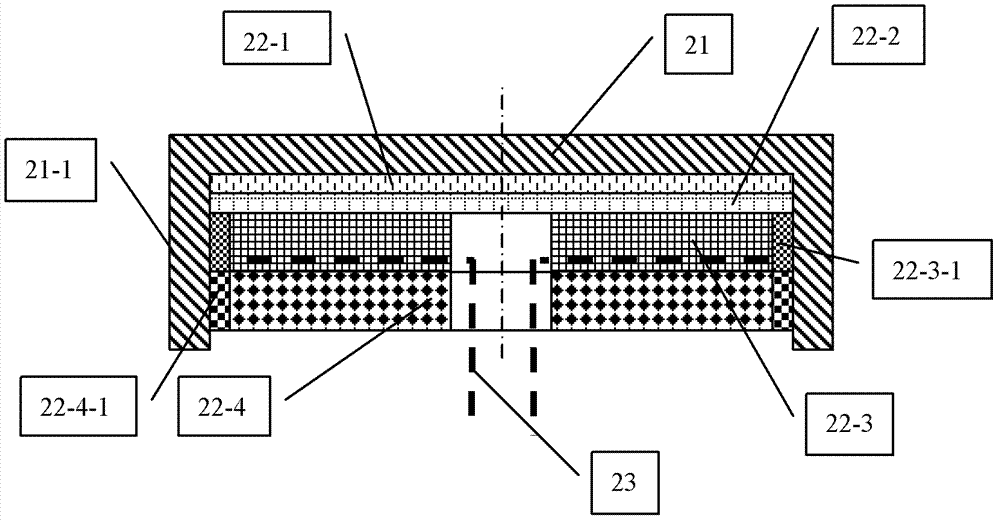A corrosion-resistant cooling fin and a corrosion-resistant heating fin
A technology of corrosion-resistant and heat-generating sheets, applied in the field of corrosion-resistant heat sinks and corrosion-resistant heat-generating sheets, can solve the problems of difficult processing, poor thermal shock resistance, short heat concentration life, etc., to improve safety and hygiene requirements, high-strength processing Manufacturing, the effect of improving thermal shock resistance
- Summary
- Abstract
- Description
- Claims
- Application Information
AI Technical Summary
Problems solved by technology
Method used
Image
Examples
Embodiment Construction
[0051] Refer to attached figure 1 . Provided in this embodiment is a disc-shaped corrosion-resistant heating sheet, which includes an austenite-ferrite stainless steel plate 21, which is sintered with 4 layers of glass-ceramic substrates on the austenite-ferrite stainless steel plate 21. Layered glass-ceramic-based multiphase composite ceramics composed of phase composite ceramics 22-1, 22-2, 22-3, and 22-4, that is, combined into axial layers, and the layered glass-ceramic-based multiphase composite ceramics belt There are frames 22-3-1 and 22-4-1, the frame 22-3-1 is located on the periphery of the glass ceramic matrix multiphase composite ceramic layer 22-3, and the frame 22-4-1 is located on the glass ceramic matrix multiphase composite ceramic layer On the periphery of layer 22-4, the austenitic·ferritic stainless steel plate 21 has a flanging 21-1, and the flanging 21-1 constitutes the outermost frame, so as to be compatible with the frame 22-3-1, 22- 4-1 is combined i...
PUM
 Login to View More
Login to View More Abstract
Description
Claims
Application Information
 Login to View More
Login to View More - R&D
- Intellectual Property
- Life Sciences
- Materials
- Tech Scout
- Unparalleled Data Quality
- Higher Quality Content
- 60% Fewer Hallucinations
Browse by: Latest US Patents, China's latest patents, Technical Efficacy Thesaurus, Application Domain, Technology Topic, Popular Technical Reports.
© 2025 PatSnap. All rights reserved.Legal|Privacy policy|Modern Slavery Act Transparency Statement|Sitemap|About US| Contact US: help@patsnap.com

